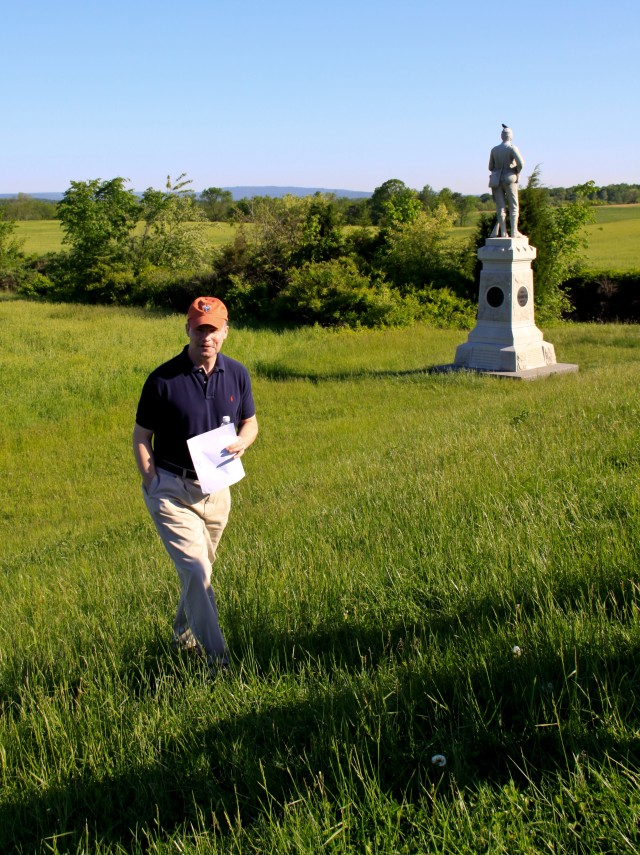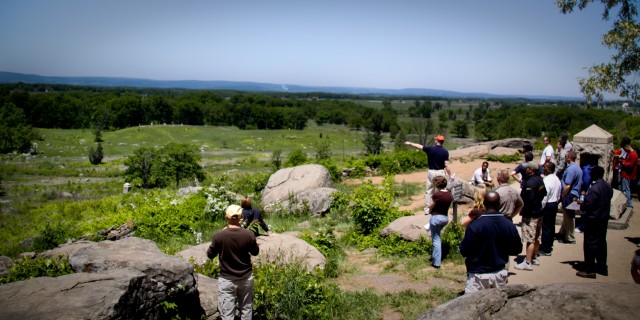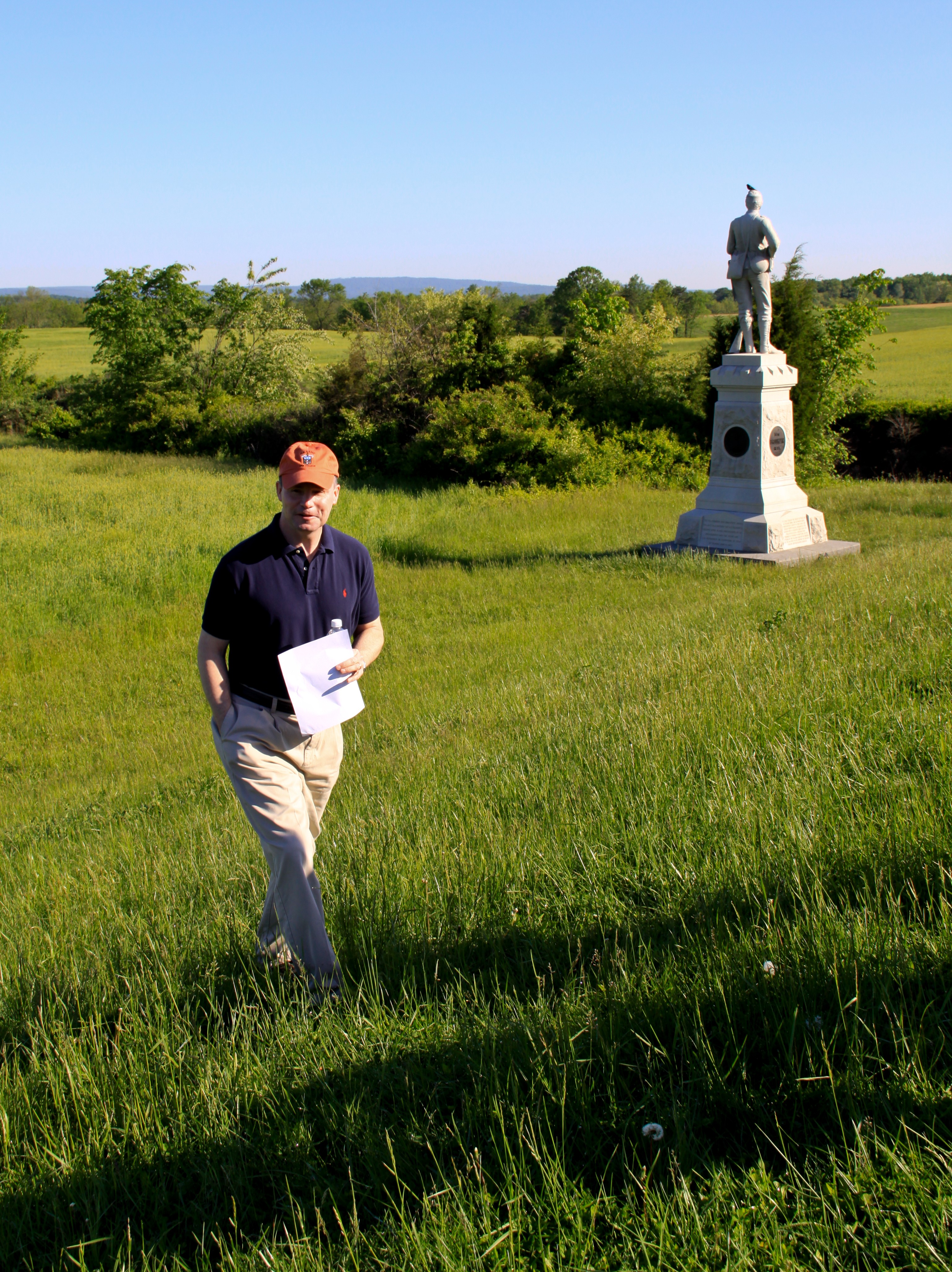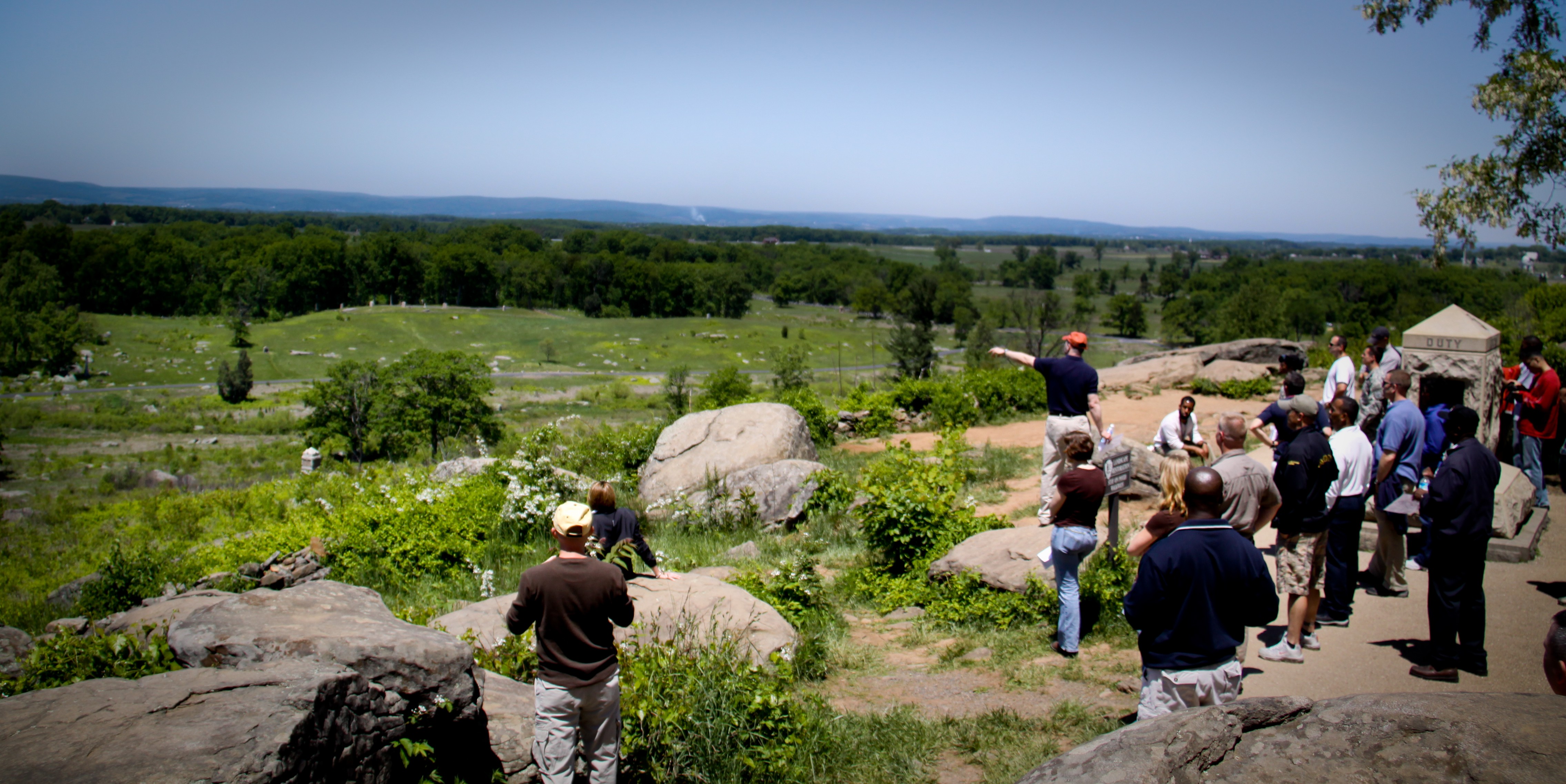Gettysburg, Pa.- The grass crunched under their feet as group members walked through a field once fed human blood.
It's a far different day than the one when so much life was lost during the Civil War. Cannon fire isn't raining down on this otherwise peaceful field in Pennsylvania.
"This is hallowed ground," said Navy Capt. Steve Knott, an instructor at the U.S. Army War College in Carlisle, Pa. "We are walking on the graves of Soldiers."
But the lessons of the battle of Gettysburg - where roughly 51,000 Union and Confederate Soldiers died during three days of intense fighting in 1863 - still echo today, said Knott, who served as a Battle Staff Ride guide May 19 for a group of about 30 Fort Meade service members and civilians.
The trip provided participants including Installation Commander Col. Daniel L. Thomas with an opportunity to spend time with one another and learn something, said Capt. Paul Holt of Headquarters and Headquarters Company, who helped schedule the trip.
Knott led the group around the expansive site, and participants discussed myriad aspects of the battle, from the intricacies of troop movements to equipment and personal dynamics.
But the mission of the day was best summed up by Thomas at the tour's outset. "It should be a very relaxing day," he said. "It should be a very informative day."
The battle holds a unique place in history. The tactical victory for the North in early July, 1863 had far-reaching effects in turning the tide of war, Knott said.
"Gettysburg is one of those rare events where you have a tactical event have an immediate strategic impact," he said.
Certain tactics such as Soldiers marching in line and across fields, stopping so their commander could give a brief rallying speech, remain things of the past in today's Army, said Capt. Matt Miller, a law school student at the University of Maryland.
"I donA,A1t think I'd stop and give a speech," he said.
Tactics of the past, though, weren't the message of the day, Knott said.
"This isn't going to be about this regiment moving here or this regiment moving there," he said. "It's about learning some skills that you can, hopefully, put in your rucksack." Stories of the personalities at play in the battle, such as the newly minted commander of the Army of the Potomac, Maj. Gen. George G. Meade, throwing resources against an enemy's diversionary attack elicited sighs from some group members.
"It's an overreaction followed by an overcompensation," Thomas said.
It was a point Knott seemed to concur with, but he added that Meade's victory presented another lesson for leaders.
"Meade's off balance, but he's being wonderfully served by subordinates," Knott said.
The battlefield also brought up other insights beyond the tactical or managerial lessons culled from the past.
For those already familiar with the history of the battle, moments such as trekking across the very field where Confederate Brig. Gen. George Pickett made a doomed march on an entrenched Union position forced them to think of the battle as it was for those who fought and died in it.
"We've been bombarded continuously and lost 20 or 30 percent of us," said Rick Hagman, a program analyst in the Directorate of Information Management who has impersonated Meade at many post functions.
But even with all the leadership lessons the battlefield offers, the site, which holds the bodies of the Soldiers' remains, brought up existential questions for some such as Lt. Col. Mike Black of the Office of the Staff Judge Advocate.
"As you look out, you can't help but think what was it like' Who were they' What did they think about what they were fighting for'" he said.




Social Sharing